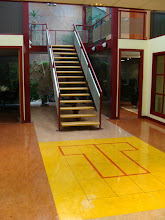
However, buildings—just as do people—also have a micro-history of their own: a personal story that explains their penetration into the collective memory of a society. They can possess one trait that reaches people beyond the artistic, architectural, and cultural value of a building. In any given moment, you can get down to the roots of its origin and discover the reasons for its very existence.
Buildings are not required to have a designated or absolute value: some yes, others not.
Some buildings are recognized by the masses simply for what they are. Others, more for what they represent.
Therefore, a construction, as humble as it may be, can acquire the status of a “monument” as long as society attributes to it a value or a cultural quality—which can be conserved, maintained, and restored.
http://www.lc-architects.com/





























































































No hay comentarios:
Publicar un comentario